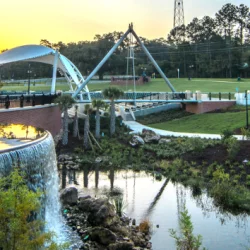5 Tips for Creating an Energy Saving Home
Although owning your own home has always been a step on the path towards the “American Dream”, it’s never been tougher to afford than it is today. Interest rates are nearing record lows, so affording a mortgage is still a possibility. But once you enter the world of home ownership you’ll face all sorts of expenses you never saw as a renter. If the hot water heater breaks, repairing it is your responsibility. Someone falls and hurts themselves on your front stairs? The legal expense is on you. A bad storm rips shingles off the roof? Well, you get the picture. That’s why it is so important to save money wherever possible, and control the expenses you can. One of these crucial areas is your electric bill. Energy costs continue to rise, but you don’t have to let your utility bills rise with them. Here are five tips for creating an energy saving home.
First of all, consider replacing some of your older appliances with new, Energy Star-rated products. You’ve probably seen the Energy Star seal all over the place when shopping, and that’s because it brings a ton of value while also helping to preserve the planet’s natural resources. Energy Star appliances regularly use about 30% less power, while providing the same or an even better level of service. So this simple change will automatically create an energy saving home. And best of all, you won’t have to think about it in the least.
Next, consider your air conditioning system. The peak of summer is here, so you probably won’t be going without it, even if you are trying to save energy. But you can install a programmable thermostat, and that will make a huge difference in your energy conservation efforts. Simply turning the temperature up or down a couple of degrees can cut 10% to 15% off of your energy costs. Even better, you’ll also be able to set your A/C system to turn off when you leave for work and then turn on twenty minutes before you are scheduled to get home. You’ll avoid cooling the house when no one is around, saving you a bunch of energy.
Another great option is making sure your attic insulation is up to the most current specifications. This is one area where some contractors try to cut corners, so you might have subpar insulation that’s allowing your heating and cooling resources to seep out through the roof. Higher end insulation will make sure you don’t waste any of your output, and even allow you to give the HVAC system a rest from time to time.
Now you should think about the water flow in your home. Installing low flow shower heads and faucets throughout your home will greatly reduce your water consumption, but it will also help your energy savings goals a great deal. You’ll run through far less hot water, which means your water heater won’t have to refill as frequently. Pair this with dropping the temperature on your hot water heater just a degree or two and you’ll notice a huge savings.
Finally, consider installing ceiling fans in all of your most frequently populated rooms. This may not create the same energy savings from new AC units throughout the house, but it might just make the air conditioning unnecessary a few days each month. Modern ceiling fans take very little energy to operate, so you can leave them on 24/7 without concern. And with the windows propped open you should find the house will remain plenty cool enough for your needs.
More to Read:
Previous Posts:




